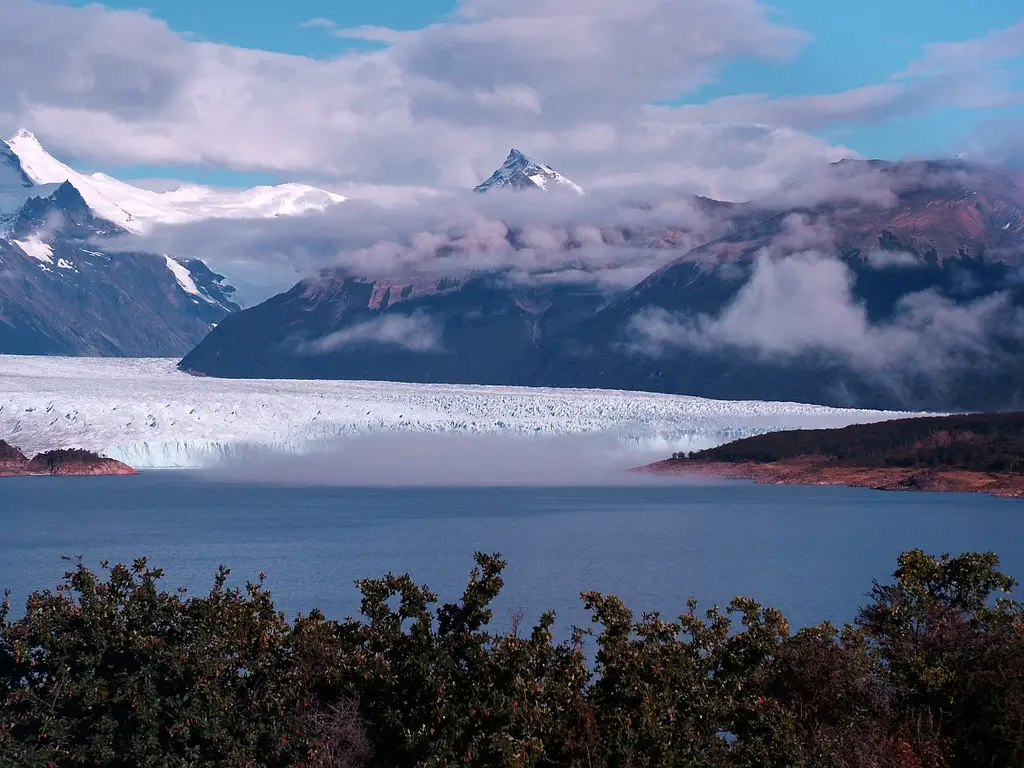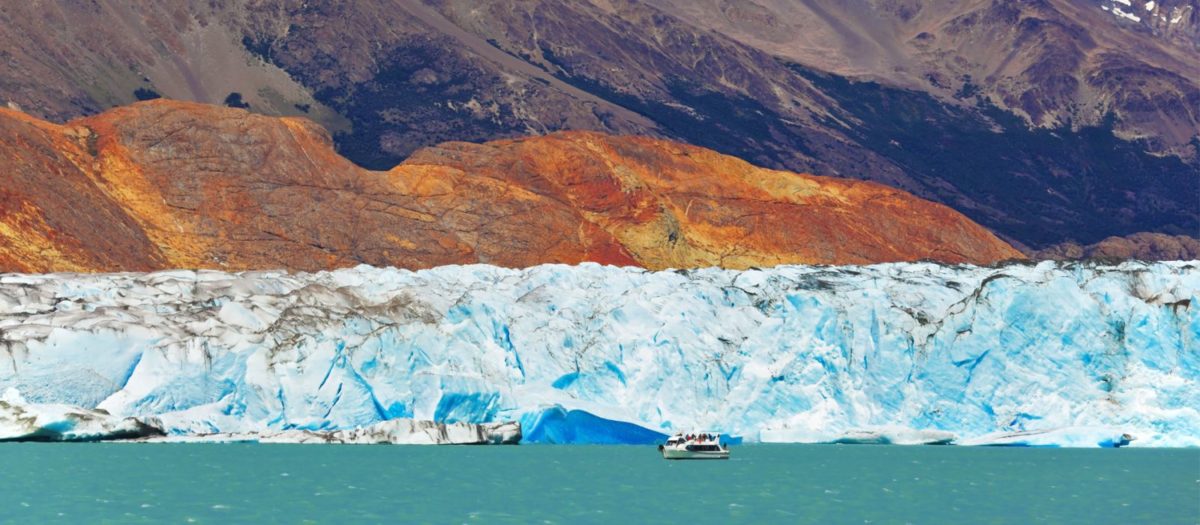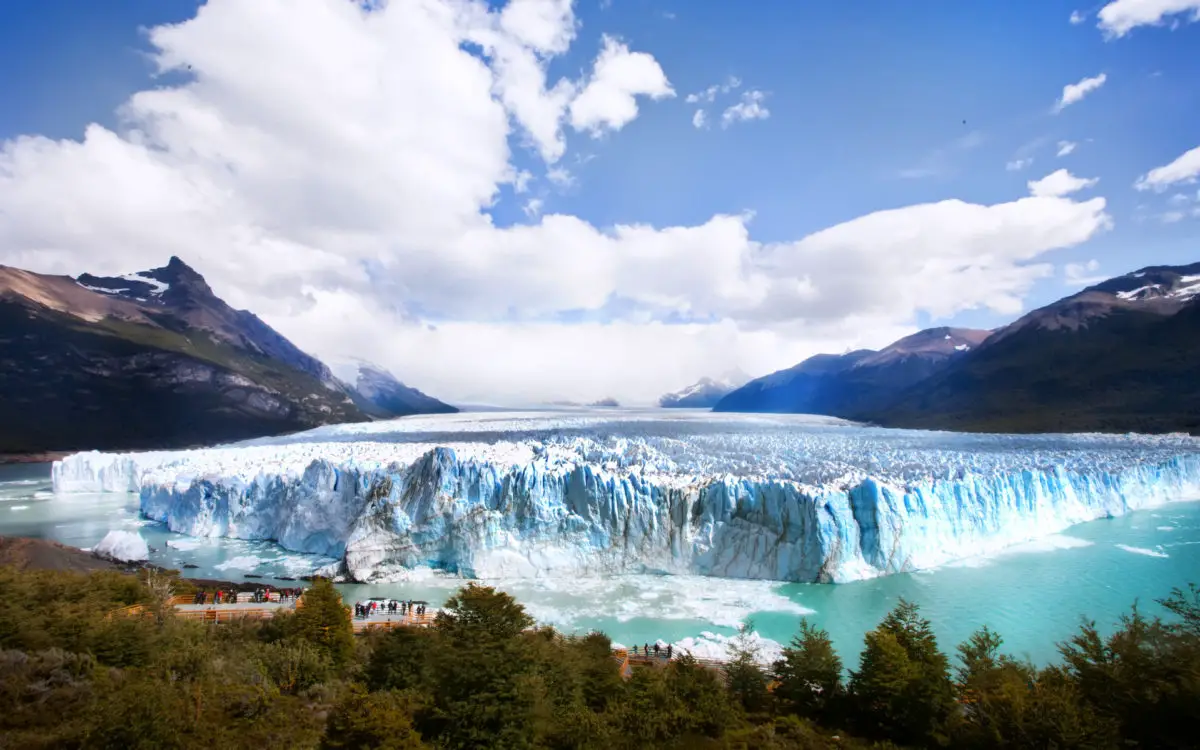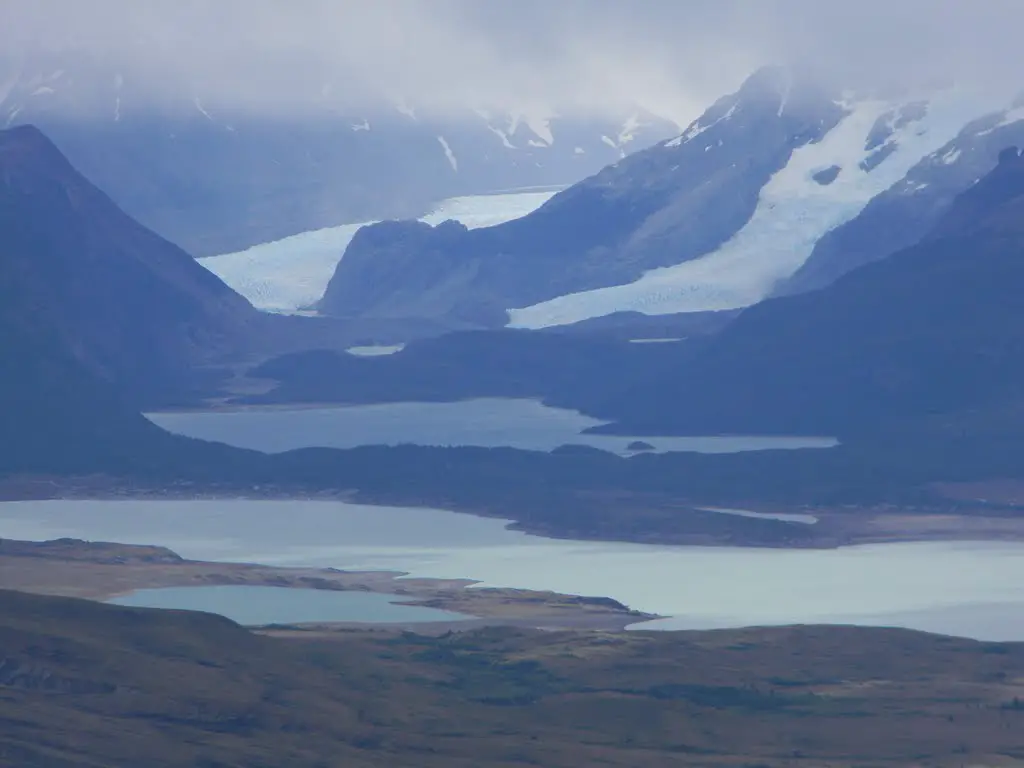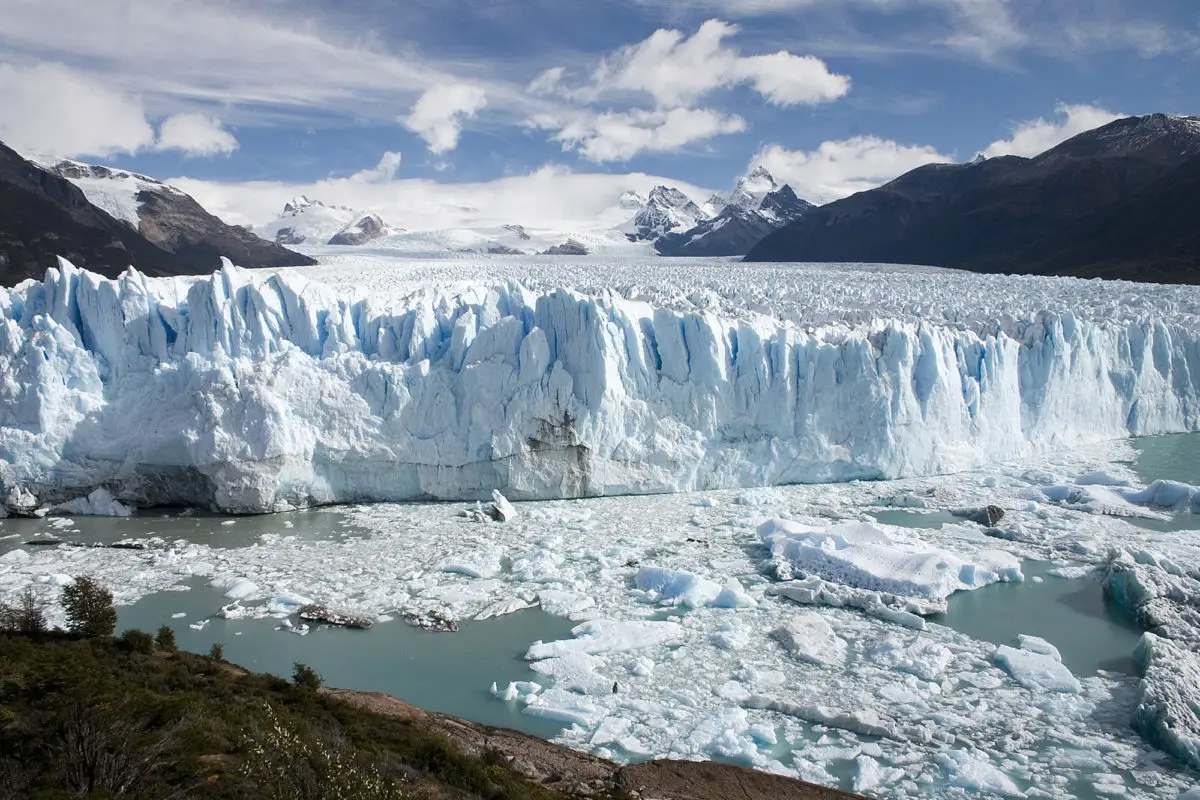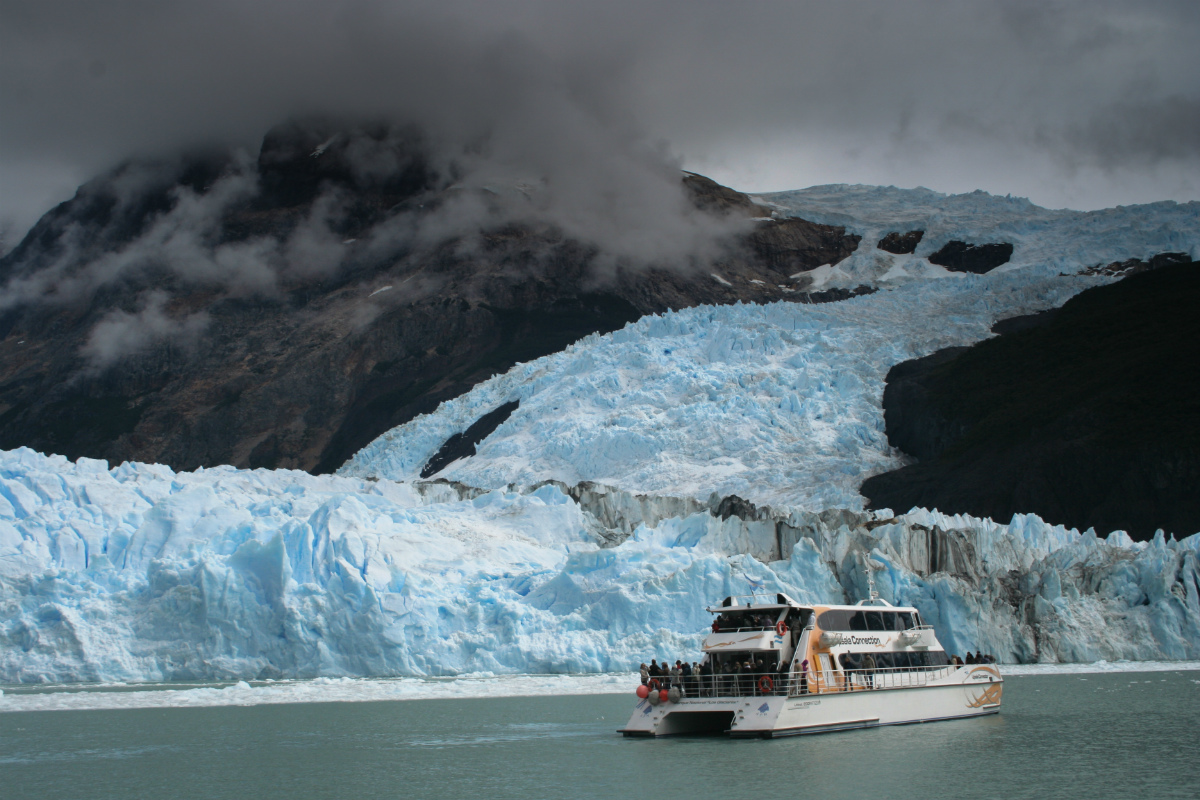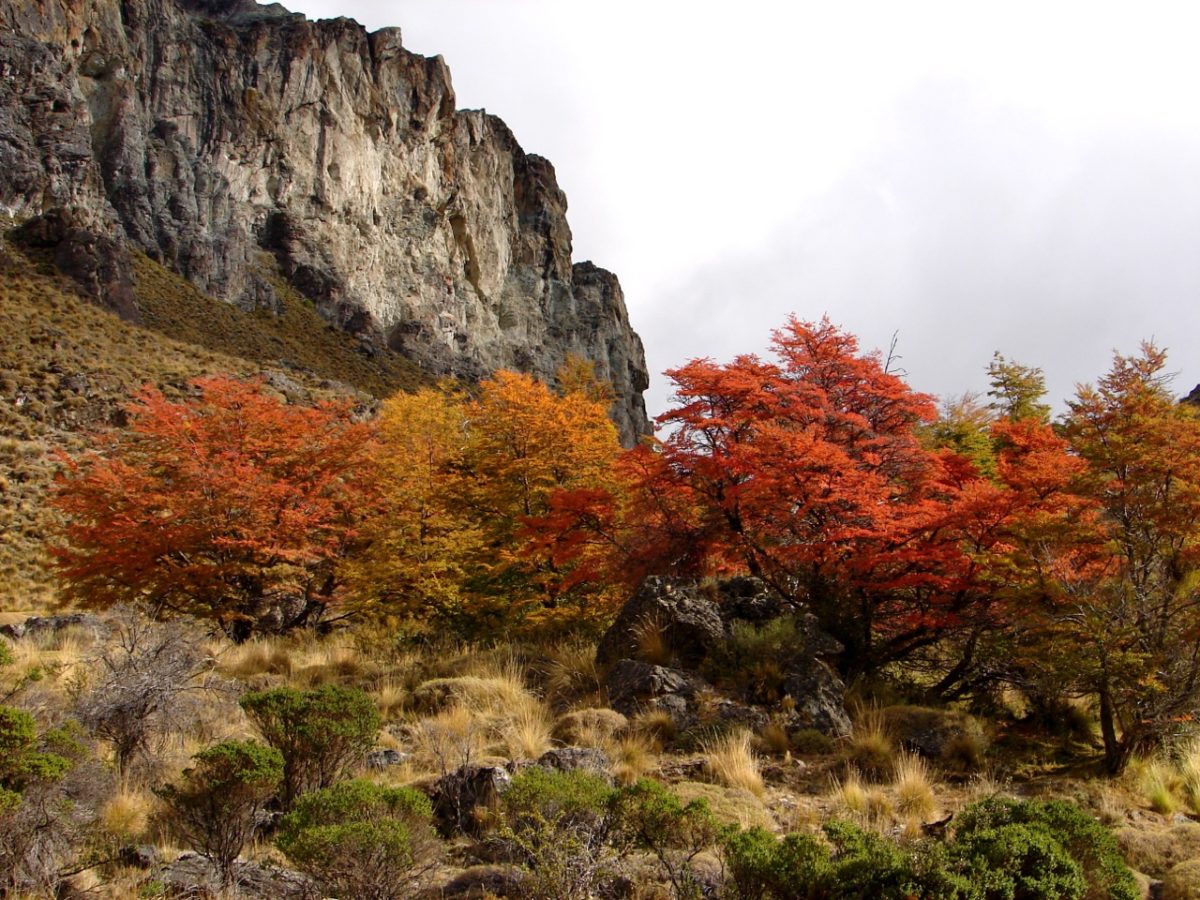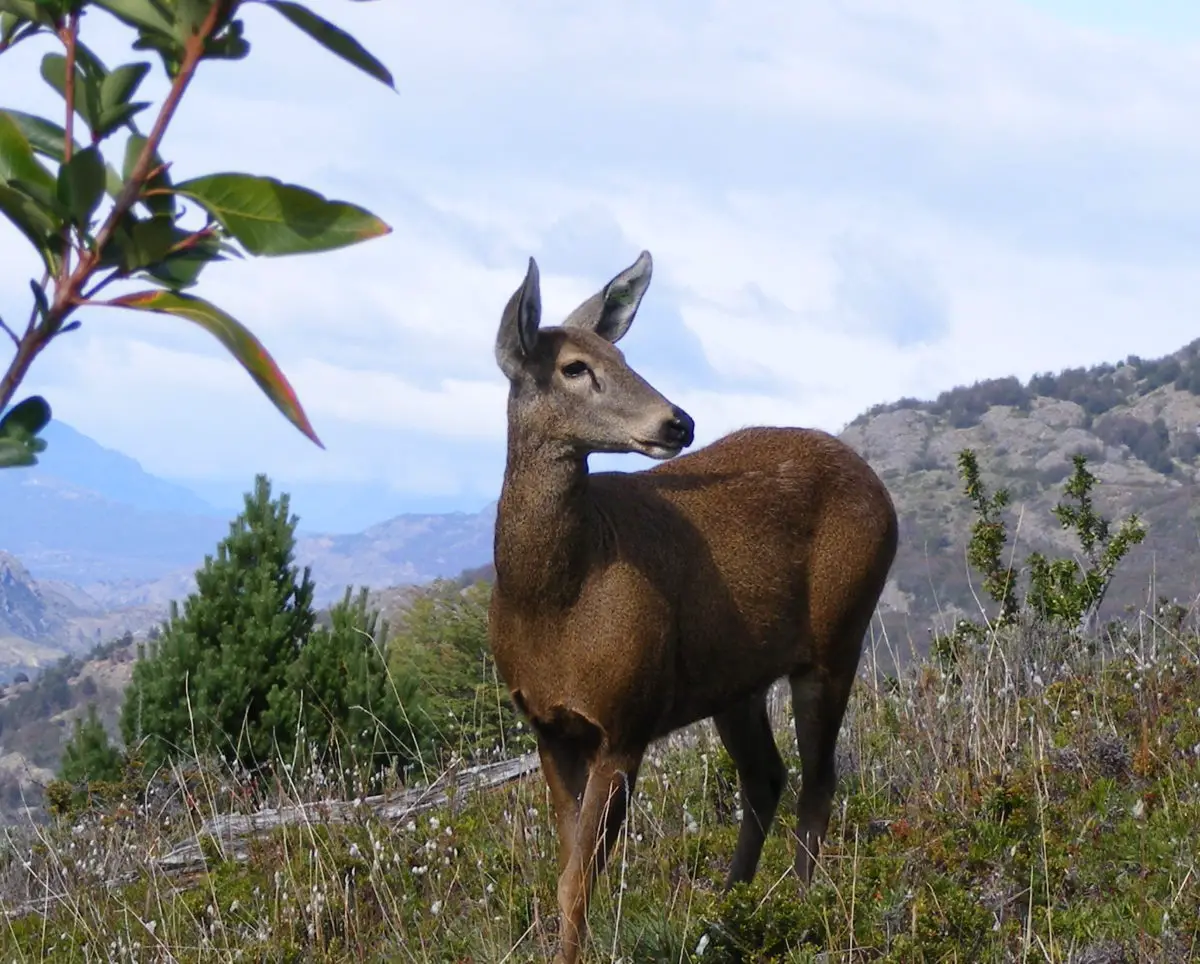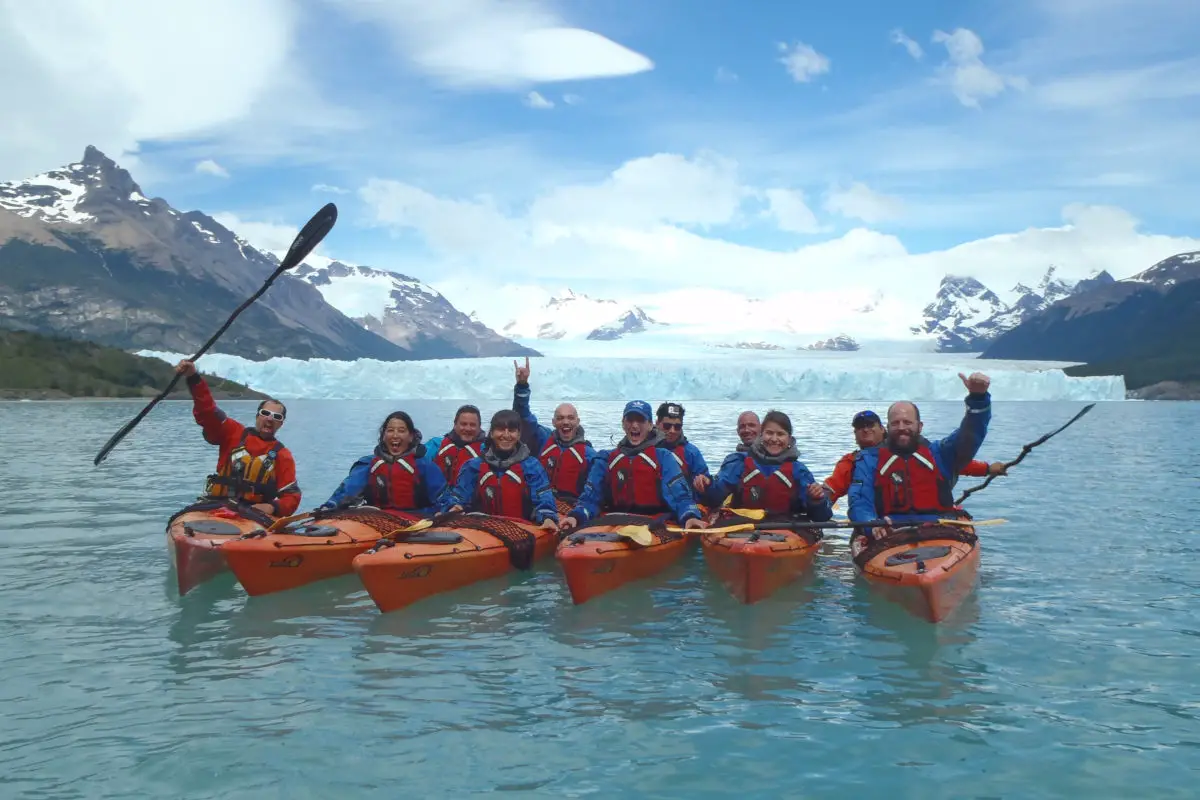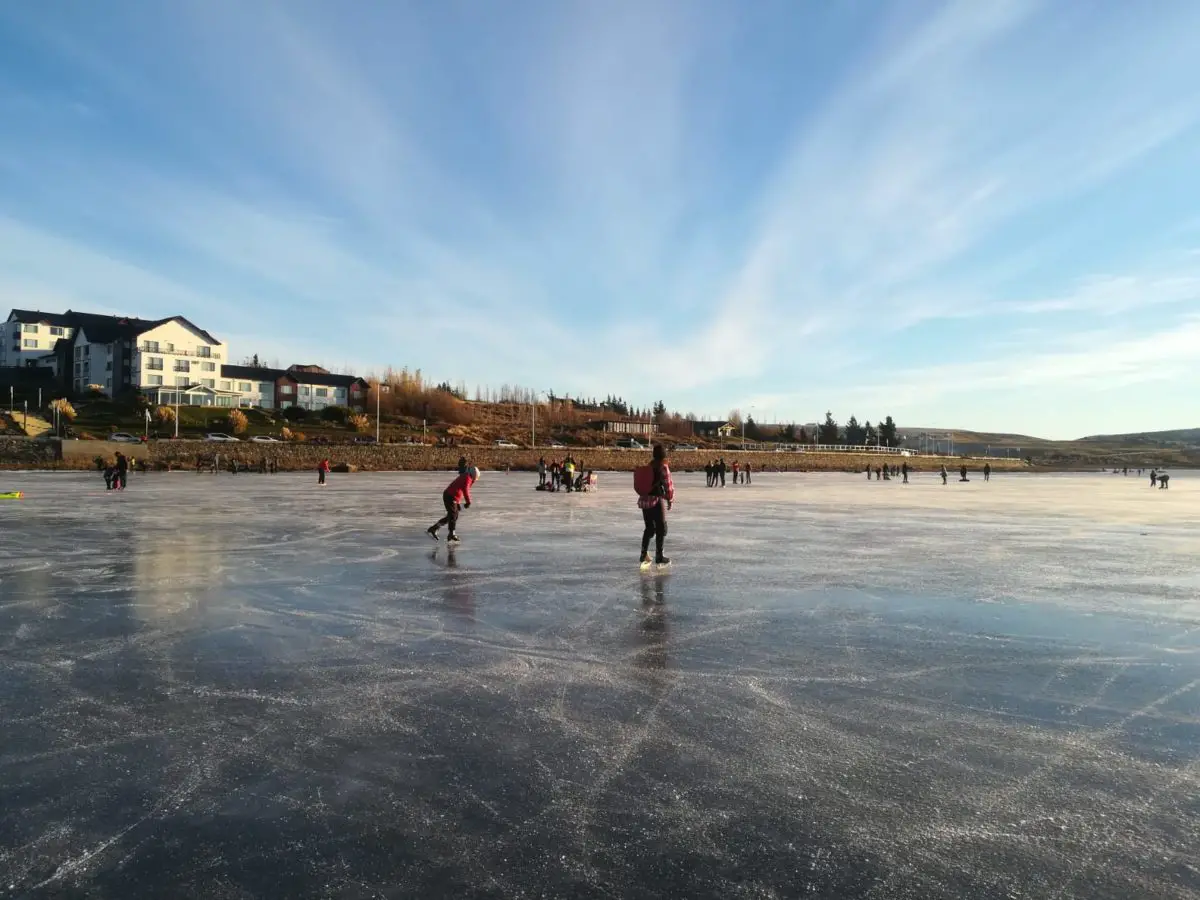One of the largest bodies of fresh water in southern Patagonia, Lake Argentino is located in the southwest of the province of Santa Cruz and offers the most spectacular scenery, adorned with a unique flora and fauna. Learn more about this lake, its characteristics, tourist attractions and much more.
Indice De Contenido
History of Lake Argentino
Lake Argentino is full of stories of explorers who wanted to conquer this territory and be the first to discover its secrets. It is the southernmost lake in Patagonia, located in the southwest of the province of Santa Cruz.
The province of Santa Cruz is located in the south of Patagonia, bordered to the north by the city of Chubut, to the east by the Atlantic Ocean, to the south by the Magellanic Islands and to the southwest by Lake Argentino.
It is said that the first settlers were members of the Aonikenk people, the southernmost group of the Tehuelche culture, made up of hunters and gatherers from the areas of the Santa Cruz River, who would have called the lake Kelta, although there is no support or evidence to confirm this.
Other references claim that the lake was called Santa Cruz by the first explorers, but there is no evidence of this either. The history of Lago Argentino therefore begins to be recorded in October 1867.
That same year, Captain Luis Piedra Buena, accompanied by other men and on the orders of Guillermo Gardiner, undertook a land expedition to the headwaters of the Santa Cruz River, a journey that took a month to complete and two weeks to return.
On their journey they managed to cross the Río Bote and came very close to where Calafate is today, on the way they also found a stream coming down from the hills and saw an island.
They continued through Chorrillo Malo to Lago Roca, and in exploring the area they thought there was a chance of finding an outlet to the Pacific.
This voyage established the first guidelines for later expeditions that led to the discovery of Lago Argentino. Among them was Rear Admiral Valentín Feilberg, who explored the shores of the lake by boat in 1873.
He was given the task of exploring the upper reaches of the Santa Cruz River, which he did in 22 days, but unfortunately the information he had was inadequate and he mistook the lake for the Viedma.
At the end of 1876, Carlos Moyano, an Argentinean soldier and explorer, together with the explorer Francisco Pascasio Moreno, set out on the first voyage from the island of Pavón, sailing and exploring the Santa Cruz River, finally finding Lake Argentino, the tributary of the Santa Cruz River, on 15 February 1877.
They were not satisfied with this discovery, however, and continued their expedition with the aim of learning more about the system surrounding this lake, so they continued their journey northwards, crossing the River La Leona as far as Lake Viedma. Then they continued along the river Chalía, Lake San Martín and Lake Tar.
At the junction of the northern and southern arms, they planted the Argentine flag and named it Punta Bandera. They also named the mountains Frías, Buenos Aires, Moyano, Stokes, Fitz Roy and Punta Avellaneda. In this way, they made known the whole system that accompanied Lake Argentino.
Then, in 1879, the glacier known today as Perito Moreno was sighted by the English captain of the Chilean navy, Juan Tomás Rogers, who named it “Francisco Gormaz”.
It was decided to name it after the Director of the Hydrographic Office of the Chilean Navy, who was responsible for the success of the expedition.
These pioneers and brave explorers were followed by many others who wanted to know more about the geology of the area, including the Frenchman Alcides Mercerat, who collected important archaeological material during his expeditions in 1892.
In 1899, the name of the glacier was changed from Francisco Gormaz to Francisco Moreno, in honour of the great and tireless explorer and naturalist Perito Moreno. The name was given by Lieutenant Iglesias, who was in charge of the studies for the Argentine Hydrographic Institute.
From all of the above, it is clear that the history of Lake Argentino is full of explorers and titanic expeditions that did not escape mistakes that prevented them from discovering it before, as happened to Valentín Filberg, who confused it with Lake Viedma. But all this was the basis for the lake to be finally renamed by the expert Francisco Pascasio Moreno, with the name of Lago Argentino.
Its characteristics
Located at an elevation of 178 metres above sea level, Lake Argentino has a surface area of 1,415 km² and an average depth of 150 metres, with the deepest areas reaching 500 metres. It also has a total volume of 219 hm³.
It is characterised by a geomorphological structure that allows us to identify a main body and two irregularly shaped arms into which the meltwater from some of the glaciers that make up the Los Glaciares National Park, which we will discuss later, flows.
This lake can be divided into two sections: one at the eastern end of the Avellaneda Peninsula and the other at the western end, where the two arms meet. This area is also characterised by the fact that it is surrounded by mountains over 2,500 metres high.
The irregular branches, fed by the waters of the glaciers, are in turn divided by channels in which we can see the tree vegetation that climbs up the mountain slopes to around 1,500 metres above sea level.
The western part of Lago Argentino has two branches, one to the north and one to the south. The southern branch, known as the Canal de los Témpanos, starts at Punta Bandera and is bordered by the Avellaneda Peninsula to the north and the Magellan Peninsula to the south.
The Canal de los Témpanos enters the Seno de Mayo, which reaches the edge of Mount Mayo, where it meets the overflow of the Mayo Glacier in a south-westerly direction.
From the Canal de los Témpanos, a depression runs south along the Ameghino glacier. This channel is influenced by the advance of the Perito Moreno glacier.
The northern arm is bordered to the southwest by the Avellaneda Peninsula and ends at the foot of the Upsala Glacier. In the southern part of Lake Argentino is the town of El Calafate, the most famous and visited by tourists coming to Lake Argentino.
It is worth mentioning that the most important tributary of Lake Argentino is the River La Leona, which has its source in Lake Viedma. The Centinela and Frías Rivers are also important tributaries of the lake, as well as its only outlet, the Santa Cruz River, which flows into the Atlantic Ocean.
The climate
The climate of Lake Argentino is cold, dry and windy in spring, with less wind in autumn. Summers are cool. Throughout the year, average temperatures vary between – 2°C and 18°C. The wettest months are between March and May.
More specifically, the cold season begins on 19 May and lasts until 21 August, with average daily maximum temperatures of less than 7°C. July is the coldest month, with average minimum temperatures of -2°C and average maximum temperatures of 4°C.
Los Glaciares National Park
Los Glaciares National Park is located in the province of Santa Cruz and covers an area of 7,240 km². It was declared a World Heritage Site in 1981 due to the importance of its geomorphology, glaciers and endangered fauna.
It owes its name to the presence of its glaciers, the largest existing ice cap outside the polar zones of the planet.
Los Glaciares National Park is divided into sections, the most important and largest being the National Park, which includes the glaciers, the western sector of Lake Argentino and the international border.
Another section is the Los Glaciares National Reserve, located in the Viedma Zone, which includes the area west of Lake Viedma and a sector north of the same lake.
The third section corresponds to the Central Zone of Los Glaciares National Reserve, which consists of the area between Lakes Viedma and Argentino, to the east of the National Park, with a small sector of the Natural Wilderness Reserve.
Finally, the Rock Zone of Los Glaciares National Reserve covers the south-eastern end. Classified as a Complex I Protected Area, the Park is managed by an Intendant, who is in charge of the 6 Departments and 2 Divisions that make up the administrative structure.
On the 11th of May 1937, during the government of Agustín Pedro Justo, the National Reserves that would become National Parks were declared, including the Los Glaciares National Reserve in the Santa Cruz Department.
Later, in 1942, the reserve was extended to include the shores of the Canal de los Témpanos and the northern shore of Lago Rico, and in 1945 the entire area was declared a National Park.
Flora and Fauna
The flora of Los Glaciares National Park is that of sub-Antarctic forests. This type of forest is characterised by different strata, dominated by a variety of species that give the whole area an exceptional floral beauty.
In the vegetation of the emergent layer, the Austrocedrus chilensis or Cordillera cypress stands out, accompanied by Nothofagus pumilio, commonly known as lenga, which is the predominant species in the area, although other Nothofagus species are also found in the region.
In the canopy, the hazelnut tree Gevuina avellana, the cinnamon tree Drimys winteri and various species of the Myrtaceae genus can be found.
In the intermediate layer, there are several species of Maytenus sp, the myrtle Luma apiculata and the patagua Myrceugenia exsucca, among others.
The shrub or undergrowth layer is enriched by the presence of different species of chusqueas, commonly known as reeds, which also share the space with shrubs such as ciruelillo and calafate, whose scientific name is Berberis microphylla, which have beautiful colourful flowers.
The herbaceous layer is generally dominated by different species of amancay, which are terrestrial orchids and beautiful ferns. On the other hand, in the epiphytic layer there are numerous specimens of bromeliads, lichens, mosses and other parasitic species of the genus Myzodendron.
As far as fauna is concerned, it is possible to observe the presence of the huemul deer, whose scientific name is Hippocamelus bisulcus, an endangered species that usually descends to the high meadows in search of food during the winter.
It is also possible to see specimens of pumas, and in the steppe areas you can see the famous guanacos, which belong to the family Camelidae and can be described as a creature very similar to the llamas, but unlike them, they are wild animals. There are also grey foxes and Patagonian skunks that enjoy the cold temperatures of this place.
Among the birds that inhabit the area, the black-necked swan and various species of ducks associated with the water bodies stand out. We must also mention the impressive condor that soars through the heights of the Patagonian sky, as well as the black woodpecker, the maroon-crowned hummingbird and the rhea known as the little rhea.
Activities on Lake Argentino
Lake Argentino is a destination for many activities, mostly related to nature. When you visit, there is so much to see and do that you will not have enough time to enjoy all the activities on offer.
Land and sea excursions are some of the most attractive options, as they allow us to get to know and be in direct contact with nature, the main attraction of this area. There are also boat, light aircraft and even hot air balloon rides available.
Another activity is cycling, which offers a different point of view and fun in the spaces that make up this beautiful Argentinean lake, besides being a healthy way to get to know it, the participant has the freedom to stop and enjoy the landscape whenever he/she decides, besides the advantage of being able to reach places that are not accessible by car.
This is a place where everything can be photographed, so if you are a photography enthusiast, you can go on expeditions that will allow you to preserve forever the beautiful landscapes of Lake Argentino and its special flora and fauna.
Fishing is another activity that can be practised in the lake, the best way is to be guided to the best spots and enjoy the great variety of fish that this natural corner offers. In addition to the activities described above, we can make special reference to two of the most practised sports in the area:
Kayaking
The kayak is a single boat, similar to a canoe, with a capacity for one or two people and is used to navigate the water using a paddle or rudder. It is an excellent exercise and does not require too much experience if practised in calm waters.
We have chosen to highlight this activity because you can now enjoy an unforgettable experience by kayaking the Perito Moreno Glacier. This is a professionally guided tour and you will get a perspective of the glacier that you would never get from a boat.
The kayak tour will allow you to appreciate its immensity, the movement of the masses, the sounds it makes, the colours and the whole panorama.
Horse Riding
Riding through the different landscapes that Lake Argentino has to offer is a truly unforgettable experience. You will have the unique experience of riding the best breeds of horses in the region and getting to know these beautiful animals.
Riding on Lake Argentino will allow you to reconnect with life and feel the fullness of the natural environment that surrounds you. Visitors who have had the opportunity to experience this say that it is an excellent way to balance the emotions in contact with Mother Nature.
Ice skating
In the southern part of the shore of Lake Argentino is the city of El Calafate, one of the most visited by tourists in the region. Here you will find the Bahía Redonda del Lago Argentino, which has the largest ice rink in Latin America and offers visitors a unique experience of frozen adventure on ice skates.
There are 700 hectares of water on the shores of El Calafete that freeze over in winter and are used as a skating rink with majestic views of the lake and surrounding nature.
To hire skates, tourists can go to the Andino Lago Argentino Club or bring their own, but the club is open to the public until half past five in the afternoon, so there is plenty of time for everyone to get to know the wonders of this winter landscape.
On winter mornings, the club’s managers are busy marking out safe areas for skating, as the surface must be firm enough to support the weight of the participants, so that they do not venture out without taking the necessary precautions and following the safety measures offered by the managers.
If you enjoyed this article, we invite you to learn more about other lake systems in the following links:
- Lake Baikal
- Lake Maracaibo
- Lake Titicaca

